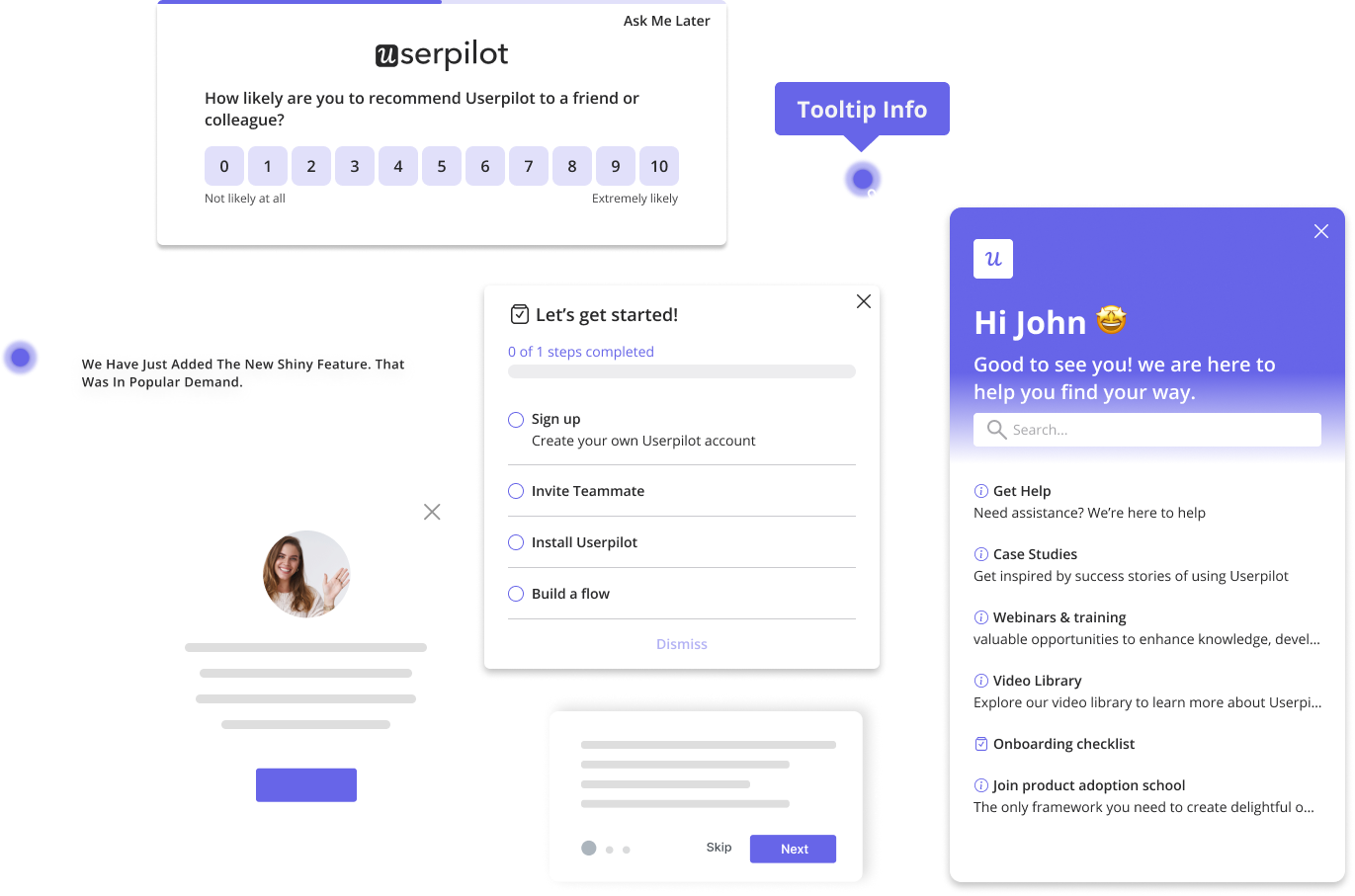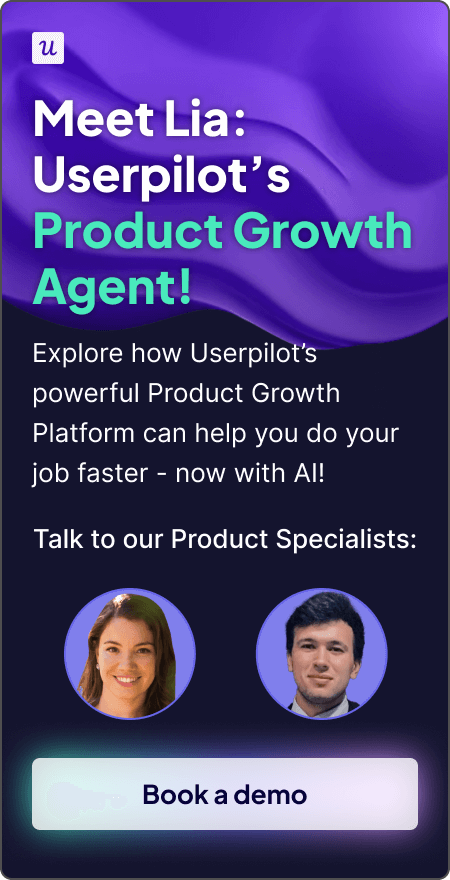Turning New Users into Advocates with an Omnichannel Lifecycle Strategy
When was the last time you felt a product truly got you? Not just in terms of solving a problem, but the way it reached out to you. You are so happy with the service and results that you want to share your experience with everyone.
Do you remember your first ride with Uber? Your additional storage earned by sharing news about Dropbox? Your first streak in Duolingo?
That experience isn’t magic. It’s product strategy. Specifically, a well-crafted omnichannel lifecycle strategy.
Let’s unpack what that means and how your product can turn cold signups into raving fans.
Try Userpilot Now
See Why 1,000+ Teams Choose Userpilot
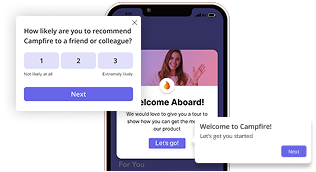
What is an omnichannel lifecycle strategy?
Most product teams do some form of multichannel communication, whether it’s planned or not: an email here, a push notification there, maybe some paid retargeting. But omnichannel isn’t about showing up everywhere. It’s about showing up most effectively: rather than sending the same message across platforms, it’s about context-aware coordination. Think perfect time, means, and message, not repetition.
Why does this work?
Because users aren’t just inbox people or mobile people. They move between devices and attention spans. Someone might scroll through your app while waiting in line, open your onboarding email later that night, and then tap a retargeting ad a week after going silent. Your strategy should naturally follow this journey, seamlessly bridging these touchpoints into a consistent experience.
Key elements of an omnichannel lifecycle setup
Let’s go over each channel and see when they can be the most useful.
Email: Used for long-term education and onboarding
This is where you set expectations, deliver deeper value, and guide users through complex features or use cases. A good onboarding sequence using email can teach new users how to get value faster without overwhelming them. Additionally, they can always easily go back to the email later if they need to recall some of the past learning.
In-app messages: Used to deliver small messages right where the users are
This can take the form of a pop-up, a tooltip pointing to a helpful feature, or a checklist presenting actions needed to complete onboarding.
For example, if someone hesitates before uploading a resume, a chatbot icon can light up and offer to create a new CV with the user using AI and a dedicated resume generator mini-product.
Push notifications: Used to reinforce habits
Those, as unreliable as they are, can be used to reinforce habits or highlight wins. These short, mobile-first nudges are most effective when they’re personalized and delivered at the perfect time.
A well-timed push saying, “You’re one lesson away from your first badge,” can spark action more than any email.
SMS: Used for highly urgent moments
Best for high-urgency moments, such as a payment failure or trial expiry. This is your ultimate, last resort engagement tool, and you want to keep it this way by using it only as a last resort. For example, sending an SMS when a job is about to expire may prompt the job seeker to take immediate action.
How to build an omnichannel strategy that works
Let’s go over the steps needed to build an effective strategy:
1. Map the journey: From new user to advocate
Every user lifecycle can be broken into stages where users have different needs:
- Signup: You got their interest. This is the honeymoon phase where excitement is high, but trust is low. Your job is to quickly show you understand their needs. You also need to spark users’ confidence that they made the right choice. Social proof, testimonials, and a clear value proposition go a long way here.
- Onboarding: Now that the user has given you the benefit of a doubt, it’s time to deliver value, fast. Guide them to their first win without friction. A checklist or personalized walkthrough can make the product feel instantly usable. In other words, it’s about education and small wins. You could break tasks into simple steps, offer live chat support, or surface FAQs. Think micro-successes that leave the user craving for more or at least taking away their “using something new I don’t know” anxiety bit by bit.
- First Value: Onboarding should lead to the users’ first successful action. It’s the moment they realize, “This works for me.” Maybe it’s getting a job match or receiving an insightful report. Reinforce this moment with a subtle celebration.
- Habit Formation: Users have achieved their first win, and now you need to keep them coming. They start coming back. Now your focus shifts to consistency. Use gamification, streaks, and tailored reminders to turn usage into a routine. You may also propose to set personal goals. Duolingo’s “XP goals” are a perfect example.
- Expansion: Once users get a handle on the basics, it’s time to introduce them to additional features and boost engagement. Once habits are in place, help users explore new use cases or advanced tools. You might showcase what others like them are doing with your product. A weekly email like “Did you know you can now X?” works well here.
- Advocacy: At this point, your users can train others on using the product and love doing so. However, what you seek is for them to start referring others. To make it easier for them (and more effective for you), create structured ways to encourage them to share, like referral bonuses or social sharing moments tied to achievements.
You need to map those needs to behavioral triggers, not just time-based sequences. Look for “Eureka Moments”. Those are points in time when a customer realizes the value and benefit of using the product and becomes more engaged and loyal to it. A Eureka Moment is also often referred to as an “Aha” moment, a “wow moment”, or a “magic moment”. These are sought after and can make or break a product.
Picture a user of Prime Video who pauses a movie to discover that the overlay shows the actors currently visible on the screen. This little feature made me personally appreciate the Amazon offer more than Netflix or Disney+. I no longer have to wonder if I correctly identified an actor behind the voice of an animated character on the screen.

Having this in mind, you can use those Eureka Moments to either trigger a message that will help guide the user to the next Eureka Moment or figure out a way to make your omnichannel strategy lead to such moments.
A similar approach you could take is to plan users’ journey in more detail and stick to the “magic journey”. This is a metaphor for a user experience that feels so smooth, intuitive, and delightful that it almost seems effortless. It’s when friction disappears, needs are anticipated, and value is delivered in a way that feels almost magical to the user.
An example of a magical journey is opening Uber for the first time in a rush, effortlessly booking a ride within seconds, and watching the car approach on a live map and then having a smooth, cashless trip with a friendly driver, leaving you thinking, “Why didn’t I always do it this way?”
2. Choose the action triggers
Once you collect data from multiple sources and manage to build your journey funnel, you have to understand which consumer groups show the same patterns. For instance, you want to understand the similarity between detractors and promoters.
To do so, create user segments based on shared behavioral characteristics. Here’s a list of behavioral signals you can group customers by:
- The plan they subscribed to.
- Their acquisition channels.
- The particular user persona they have, such as by role or business size.
- The recent actions they have taken, such as using specific features.
- The features they interact with inside the product.
- The time spent on the product.
This will allow you to create personalized flows for specific segments, leading to increased engagement and higher retention.
If you choose to work with Userpilot, you can first run microsurveys and then segment users based on multiple conditions, such as NPS score, feature usage, completed milestones, company size, purchase history, and more.
3. Choose the right channel for the message
The key here is to actually start off completely channel-agnostic. In fact, you could make a script of what you would like to say to the user operating your product to guide him or her towards the next Eureka or magical moment.
In fact, this is a perfect input for a guided product discovery session with real users. You can see how your hand-holding works, whether the communication is clear, and whether the Eureka Moments are really those in the first place. You will either observe smooth sailing towards the user being a fan of your product, or you will see some hurdles along the way. If the latter, that’s fine; simply apply the learnings and try again!
It’s only then, with a completed and tested script, that you can sit down and decide which channel from earlier in the article you should utilize at each step. Remember to be creative; you don’t need to use a single channel at each point, and they can provide the same info in parallel or complement each other. Say, you can have a notification about new incoming messages via push notification, and then a summary of all unanswered chats later the very same day via email.
Of course, not all Eureka Moments are created equal, and perhaps, if you have the development capacity, it’s best to try different alternatives to uncover the best one. But what does “best” mean in this context?
4. Measure what matters
Depending on the product and current goals, you may want to decide on a single or a combination of the following metrics in order to determine how successful your omnichannel strategy is:
- Time-to-value (TTV): How fast do users hit their first success? A shorter TTV often correlates with higher retention. Track the median time from signup to first key action.
- Feature adoption: Are users utilizing the core, monitored value propositions? If not, maybe users are unable to reach the main arguments to stay with the app, and you need to simply guide them there.
- Referral behavior: Are users bringing in others? Monitor referral shares, code usage, and post-signup conversion rates. Referrals are often signs of deep product satisfaction.
- NPS: A lagging indicator, but still useful. Pair it with qualitative feedback to understand what’s truly driving delight or frustration.
If one campaign gets a bump in time-to-value but not in retention, dig deeper. Maybe it overpromised but underdelivered. Cohort analysis helps you zoom in on what actually drives progress versus surface-level engagement.
Of course, remember that an omnichannel strategy is not a one-and-done effort. You need to first experiment with various versions until you get it right, and then be responsive to improve the strategy whenever the market or marketing trends change. With this approach, you might be able to reach heights similar to those in the next paragraph.
Case Study: Duolingo’s Nudges That Work
Duolingo used to have sky-high signup rates but poor retention past Day 7. People liked the idea of learning a language, but weren’t committing to making it a habit and actually getting the value offered.
They deployed a series of smart, behaviorally timed nudges:
- In-app gamification: XP goals, daily streaks, progress meters. These elements turned learning into a game, encouraging users to show up daily.
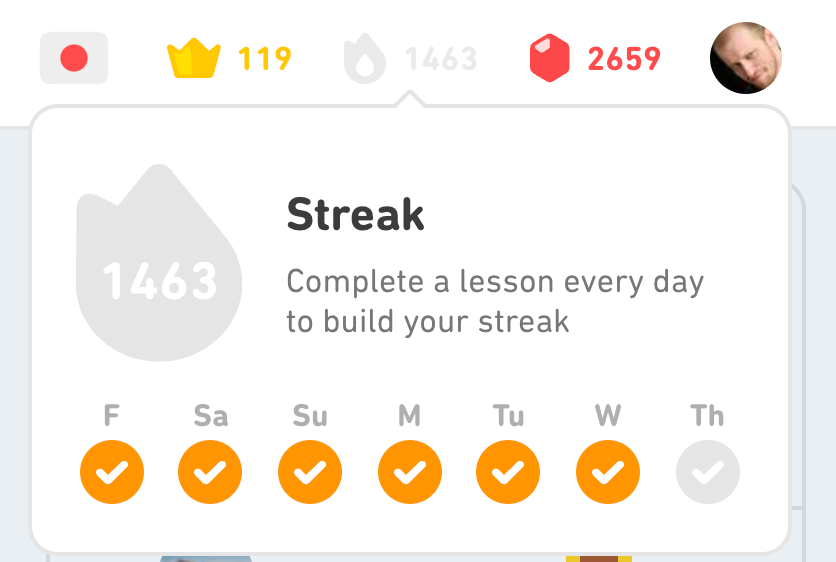
- Email: Personalized streak summaries and encouragement. If you missed a day, you’d get an encouraging “warning” like: “Don’t break your 6-day streak!”
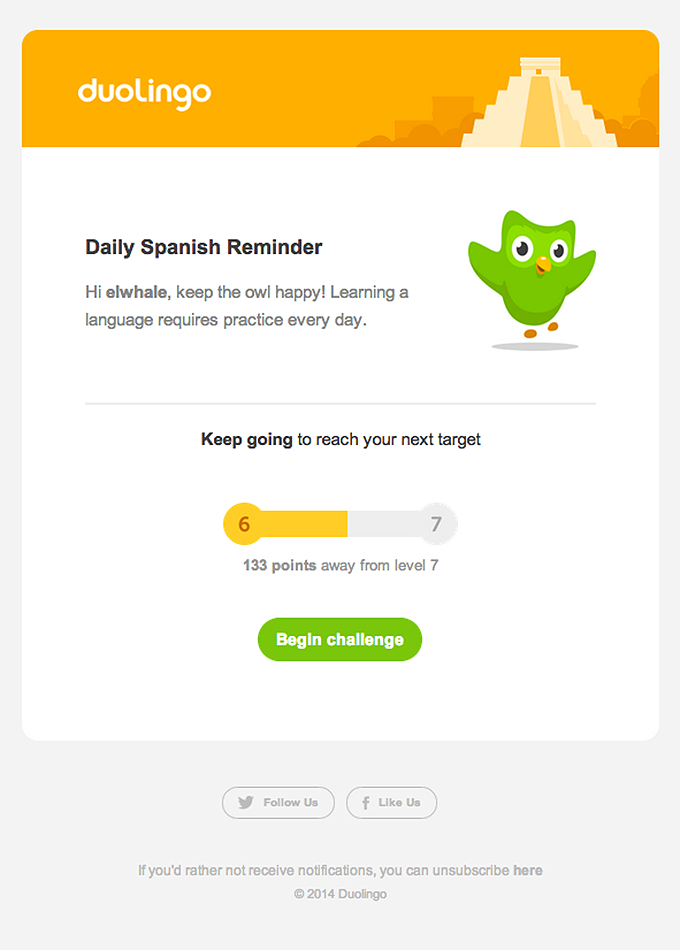
- Push notifications: Sent during each user’s preferred time slot, learned from usage patterns. Timing mattered as much as the message itself.
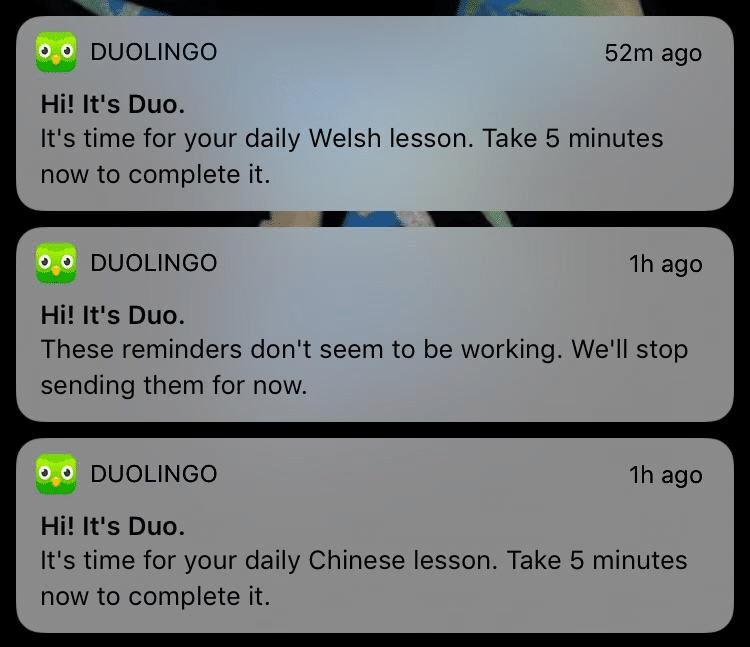
- Social features: Share your progress, invite friends. Social proof and accountability worked hand in hand to deepen user investment.
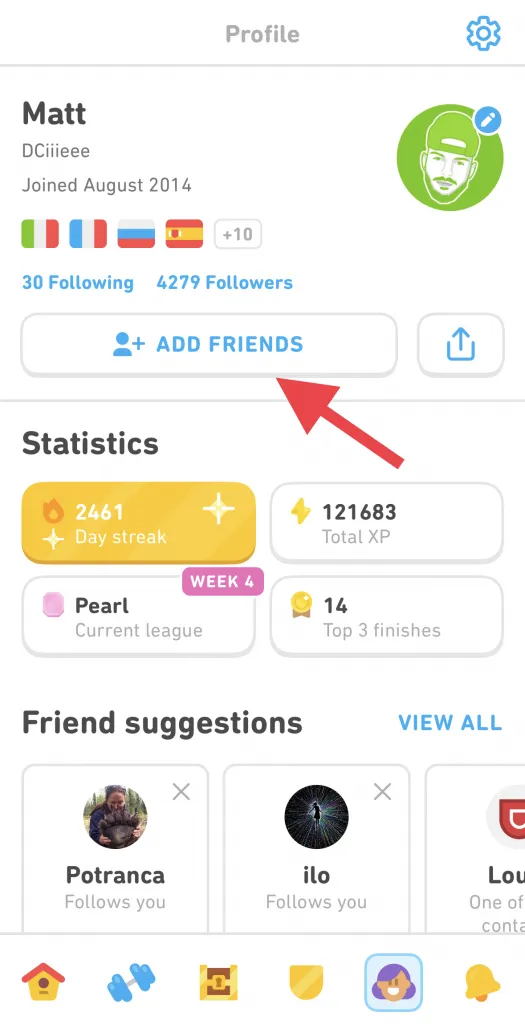
- Community: Leaderboards and clubs created accountability. Users could see how they stacked up, which tapped into intrinsic motivation.
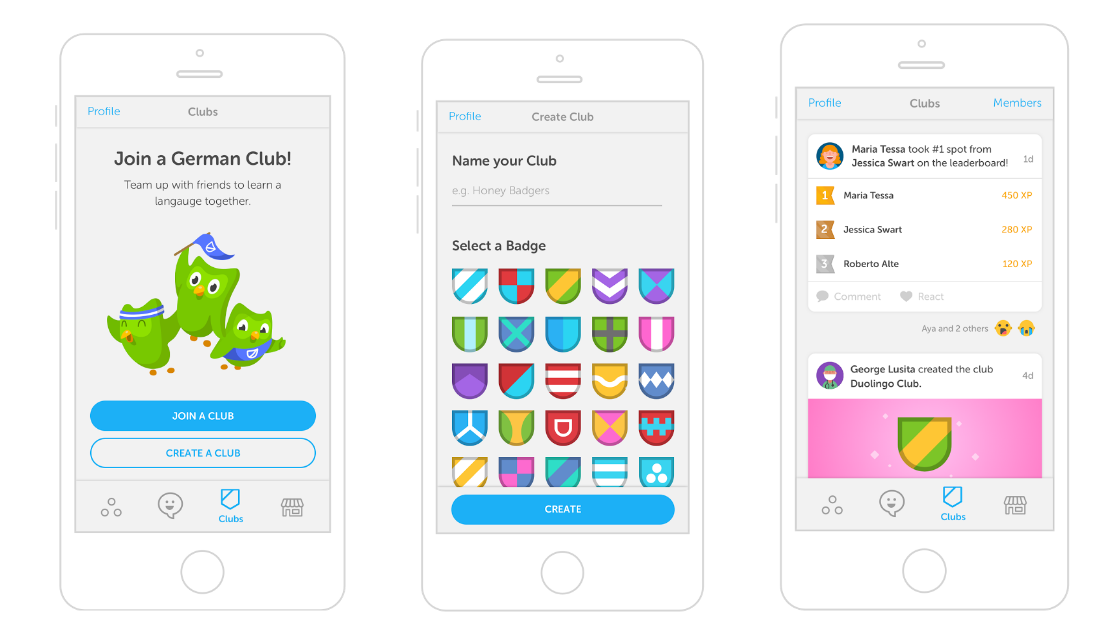
The Results? 30% increase in 7-day retention and referral rates jumped after adding reward-based invites tied to XP achievements. Now, Duolingo is the #1 language app with over 500M downloads. Thus, it successfully orchestrated a system of nudges across channels that made not coming back feel incomplete.
Closing Thoughts
If you were to remember one thing from this article, it should be the fact that omnichannel doesn’t mean sending the same, often boring, message through all possible channels at any time. Quite the opposite! It’s about delivering relevant content at the right moment, on the right channel, with the right message.
When done right, it stops being about channels altogether. It becomes a user experience that feels like having a Product Representative standing next to you, guiding you on how to get the most out of the product you’re using.
You’re not just building a funnel. You’re building a journey, hopefully a “magical” one. And the best journeys end with users who not only stay but bring others along.


